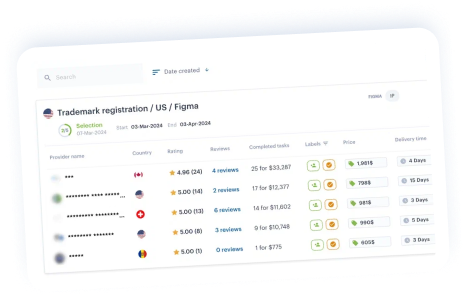If your company owns a product or a technology that likely has potential on the global market, investing in international patent protection can be a provident and reasonable step. However, registering intellectual property rights abroad requires careful preparation and comprehensive management. Today, we’ll discuss some of the crucial considerations worth taking into account when pursuing a global IP strategy.
Analyze your current situation
Before launching your global IP program, the first issue worth considering is whether there is an actual business need for that. To get positive on this, you need to have a complete picture of your company’s overall commercial strategy in the mid- and long term, as well as understand the invention’s potential and the current state of the industry.
In other words, it’d be a good idea to analyze your current business objectives with regards to the specific niche that your product or technology might fill in the relevant business field globally. Consider such factors as the market size, the number of potential competitors, product lifecycle, and, of course, your estimated budget for global IP expansion. Relying on this information, you’ll be able to go into the details and devise a roadmap.
Develop a global IP strategy
Without a clear strategy, filing international patents and extending your IP portfolio might result in rapidly swelling patent costs. While closely connected to an enterprise’s overseas business development strategy, a global IP strategy also considers such factors as the required types of patents and the level of IP rights protection.
Depending on your expansion plans and budget limitations, you can follow one of these IP strategies:
-
file applications to the patent office of each country of interest;
-
file applications to the regional patent offices each covering a number of countries (e.g., European Patent Office (EPO), Eurasian Patent Organization (EAPO), GCC Patent Office, etc);
-
file a single application under the Patent Cooperation Treaty (PCT) to set your IP priority in more than 140 countries worldwide – which enables you to extend the deadline for national patent applications from 12 to 30 months and thus save this opportunity for the future.
Choose countries to file applications
There are roughly 200 countries where you can protect your IP rights. Of course, there’s hardly any need to file patent applications in every country of the world, so you’ll need to select your key markets of interest. The general advice to consider here is to choose markets that cover at least 60% of the future revenues at the lowest possible price.
Obviously, you would want to prioritize countries in which your product or invention is expected to be manufactured and traded as well as those in which potential competitors might replicate it. Sometimes, the best choice would be to file a mass application under EPO or other regional patent offices enabling simultaneous filings for a number of national patents.
Work with local attorneys
If you choose to register your IP rights in multiple countries, you’ll need to deal with different patent law regulations and practices. Sometimes you might find it easier to hire an agency on your home market to handle these issues. However, this is a rather costly approach since a lot of agencies will most likely outsource some of the tasks to sub-contractors. This results in additional expenses that can make up to 80% of the final price. For example, one of our clients was able to cut down €13.553 on IP registration by adopting our solution which enabled them to work directly with local attorneys and manage all the tasks easily.
This is why global IP management outsourcing might be a costly affair. An alternative approach would be to establish a direct connection with the end contractors in the countries where you’ll be filing your patent applications. Apart from lowering your overall expenses on IP rights protection, you’ll have better control of the patenting process since there will be no sub-contractors involved.
Use IP management tools
IP rights management can be a complicated process, especially when it comes to global rights protection. Earlier on, companies used to either hire a team of managers or outsource these tasks to agencies. Today, however, a lot of the manual work can be automated, and the whole process is made cheaper, more transparent and controllable by implementing IP management tools like iPNOTE.
With such tools, you’ll be able to easily organize your IP portfolio, plan your IP budget, search for and connect with local attorneys worldwide. Moreover, all the patent data, statuses and documents are stored in your account so you can access them at any time – unlike the situation when you work with an agency.
By adopting IP management software, you get a single entry point for all of your global IP protection and management tasks which results in a tangible productivity boost and up to 50-80% economy.
Final thoughts
To successfully register IP rights abroad, you can start by analyzing the current disposition and business needs, followed by creating a global IP strategy. Consider such factors as the market potential, competitors, patent protection regulations in the regions where your product might be produced, used, or sold. After choosing the countries in which to file patent applications, try to connect to local attorneys rather than outsourcing the work to a domestic agency. Last but not least, make your life easier by adopting an IP management tool and enjoy the cost savings.
The iPNOTE platform features more than 700 IP law firms that cover more than 150 countries, so you can always find the right direct service provider using our flexible filtering system. Take a look at our directory of providers.
Sign up for free and we’ll help you solve any IP problem.
Launch your brand with a trademark application in Hong Kong and secure your inventions with a patent application in Hong Kong. Start protecting your ideas today!







